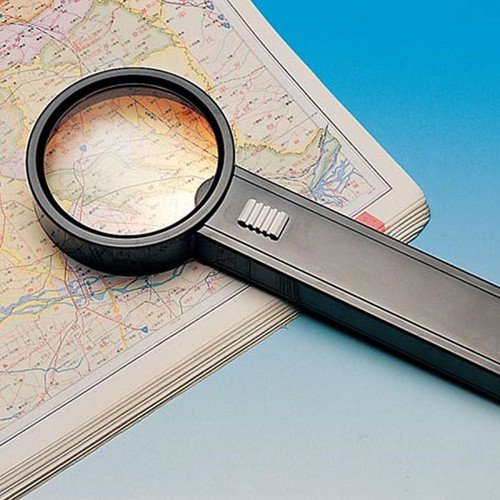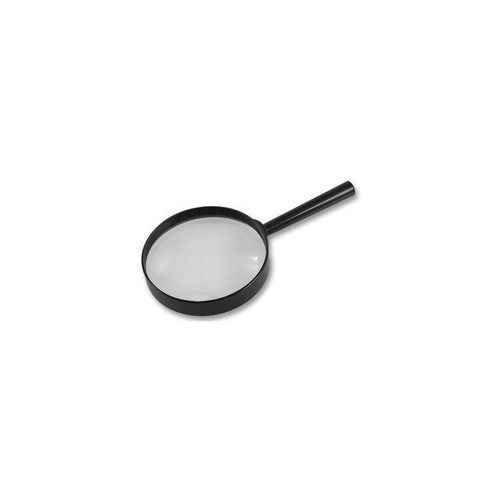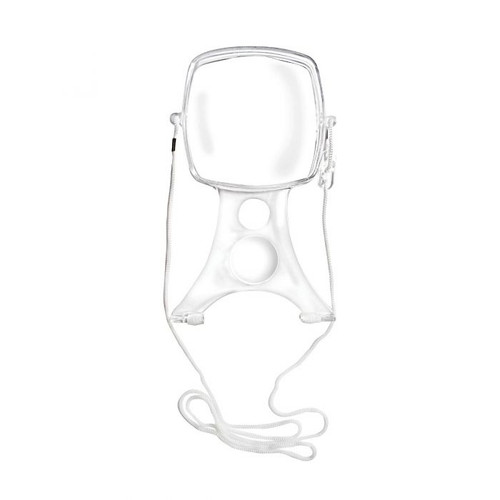Offering outstanding value for money, this Magnifying Glass with Light features an easy to grip handle making it perfect for those with limited dexterity. It has a built-in light that is perfect for use in low light areas. Highly compact and incredibly durable, it makes the ideal travel companion. There are two different sizes available: small or standard.
Magnifying Glass with Light Information:
- Large easy grip handle
- Built-in light
- Ideal for use in low lighting
- Durable and hardwearing
- Lightweight and compact
- Perfect for use when travelling
- Magnifications: 3x
- Small Magnifying Glass lens diameter: 50mm (2")
- Small Magnifying Glass length: 140mm (5.5")
- Standard Magnifying Glass lens diameter: 75mm (3")
- Standard Magnifying Glass length: 210mm (8.25")
- Batteries required: 2 x AA (not included)
What strength magnifying glass is best?
The best strength of a magnifying glass for the elderly or those with sight problems depends on the individual's specific visual impairment and needs. Magnifying glasses come in various strengths, typically measured in magnification power or diopters. Here are some general guidelines to consider when choosing a magnifying glass for individuals with sight problems:
- Low to Medium Magnification (2X to 5X): For individuals with mild to moderate visual impairments or for tasks requiring a moderate level of magnification, a magnifying glass with low to medium strength (2X to 5X magnification) may be suitable. This strength provides a modest increase in magnification, making it easier to read small print, examine details, or perform tasks such as crafting or hobbies.
- Medium to High Magnification (5X to 10X): Individuals with moderate to severe visual impairments may benefit from a magnifying glass with medium to high strength (5X to 10X magnification). This strength offers a greater level of magnification, allowing for a more detailed examination of small objects or fine print.
- Lighted Magnifying Glass: Consider choosing a magnifying glass with built-in LED lights, especially for individuals with low vision or for tasks that require additional illumination. Lighted magnifying glasses enhance visibility and make it easier to see details, especially in dimly lit environments.
- Hands-Free Magnification: Some magnifying glasses come with stands or attachments that allow for hands-free use. This can be beneficial for individuals who have difficulty holding a magnifying glass steady or who need both hands free to perform tasks.
- Adjustable Focus: Look for magnifying glasses with adjustable focus or variable magnification settings, allowing users to customise the level of magnification based on their specific needs and preferences.
- Large Lens Size: Choose a magnifying glass with a large lens size to provide a wider field of view and reduce the need to move the magnifying glass frequently while reading or performing tasks.
It's essential for individuals with sight problems to consult with an eye care professional or low vision specialist to determine the most appropriate magnification strength and features for their specific needs. Additionally, trying out different magnifying glasses to find the most comfortable and effective option is recommended.
What magnification is best for reading?
The best magnification for reading varies depending on factors such as the individual's visual impairment, the size of the text being read, and personal preferences. However, for most people with mild to moderate vision impairments who struggle with reading small print, a magnification range of 2X to 4X is often recommended. Here's a breakdown of magnification strengths and their typical uses for reading:
- Low Magnification (1X to 2X): Low magnification is suitable for individuals with minimal visual impairment or for reading larger print materials such as newspapers, magazines, or books with relatively large text.
- Medium Magnification (2X to 4X): Medium magnification is ideal for individuals with mild to moderate visual impairments who require a moderate level of magnification to comfortably read standard-sized text. This range is commonly used for reading books, labels, menus, and other everyday materials.
- High Magnification (4X to 6X or higher): High magnification is recommended for individuals with more significant visual impairments or for reading very small print or detailed text. This strength may be necessary for reading fine print on medication labels, ingredient lists, or small electronic screens.
- Adjustable Magnification: Some magnifiers offer adjustable magnification settings, allowing users to customise the level of magnification based on their specific needs and the size of the text being read.
- Lighting: In addition to magnification, proper lighting is essential for reading. Choose a magnifier with built-in LED lights, such as our magnifying glass with light
Ultimately, the best magnification for reading is the one that provides clear, comfortable, and distortion-free vision for the individual. It's recommended to consult with an eye care professional or low vision specialist to determine the most appropriate magnification strength and features based on the individual's specific visual needs and preferences. Additionally, trying out different magnifiers to find the most comfortable and effective option is recommended.










